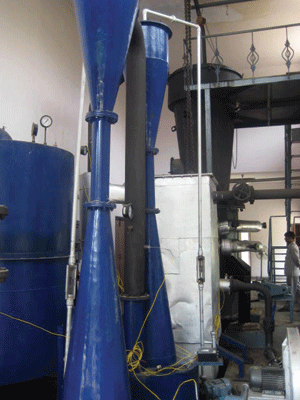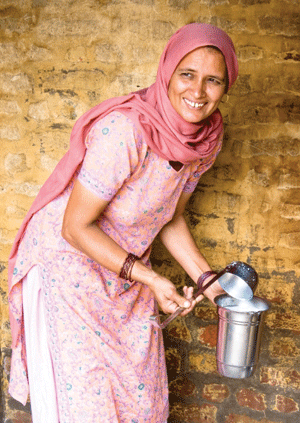
|
Published:
Renewable energy to power fridges in rural India
Australian and Indian researchers are investigating low-cost renewable energy solutions for storing food and providing electric lighting in remote rural Indian communities with no distributed power supply.

|
|
The renewable energy project will deliver cold storage for food and electrical lighting for remote Indian villages. Credit: Stockphoto
|
The widespread lack of access to electricity in rural areas of India means that cold storage facilities are few and far between. Every year, millions of tonnes of fresh produce spoils before it can be consumed.
CSIRO has been collaborating with The Energy and Resources Institute (TERI) in India on solar-powered cold storage projects, with funding from the Asia-Pacific Partnership on Clean Development and Climate. An extra boost of $1 million from AusAID, announced by Prime Minister Kevin Rudd last November, has allowed a second project to get underway.
The projects, headed by CSIRO Energy Technology’s Dr Stephen White, will compare two different renewable energy-based heat sources and two different cooling technologies. The first is a low-emission solar thermal system combined with absorption refrigeration. The second is a biomass-gasifier that uses a solid desiccant cooling system.
‘We plan to find out which system is more effective for refrigerated storage, and which system is the most cost effective,’ says Dr White.

|
|
The biomass-gasifier uses a gas engine to produce electricity; waste heat from the engine runs the desiccant refrigeration system. Credit: CSIRO
|
The solar thermal system uses energy from the sun to drive the refrigeration process. A series of concentrating collector troughs reflects light onto a focal point, which heats a thermal store. Heat from the thermal store is then converted into cold using an absorption chiller unit. The design of this system is complete, and it will soon be built.
The biomass-gasifier uses a gas-driven engine to produce electricity, and waste heat from the engine is used to run the desiccant refrigeration system.
‘The design phase of this project will be completed this year,’ says Dr White. ‘We will build the cooling system at our Energy Technology Newcastle site, and do the initial testing. Then, we’ll send it to India, where it will be bolted onto a gas engine built by TERI.’
Dr White explains that the refrigeration systems are being envisaged as a communal cold store – a single building where farmers will be able to bring their produce for storage.
‘TERI plans to set up a commercial arrangement for maintenance and operation of the cold store,’ he explains.
‘This could be a microenterprise arrangement, in which an owner rents out space inside the cold store, and is responsible for maintaining the system.’
As well as powering the communal cold store, the systems will supply electricity to some of India’s most remote villages for the first time. The power will be used for lighting, as well as providing new local enterprise opportunities.
According to Dr White, both systems should be up and running in the chosen villages by 2011.
‘We will then monitor the performance of the two systems over a year or so,’ he says. ‘After the project ends, the systems will remain as part of the community’s lifestyle, and the best unit will be used for commercialisation purposes.’
As with any science experiment, a few variables will affect each system’s performance and efficiency. Success will depend on usage patterns and the availability of the heat source.
The biomass-gasifier system will operate intermittently, depending on how often the villagers collect biomass – woody material and other waste agricultural products – and feed it to the gasifier.
In contrast, the solar thermal system will be self-running, but only while the sun is shining. India has about 300 sunny days each year, but Dr White says that air pollution haze may affect the system’s efficiency. To combat this, the solar thermal system will also be supplied with a biomass gasifier-based generator to supply backup heat for the cooling system.
Cost will also be an important factor for success. Dr White predicts that the solar cooling system is likely to be the best for refrigeration, but more expensive, whereas the biomass-gasifier system is likely to be the most cost effective, but may not achieve the best refrigeration outcome.



